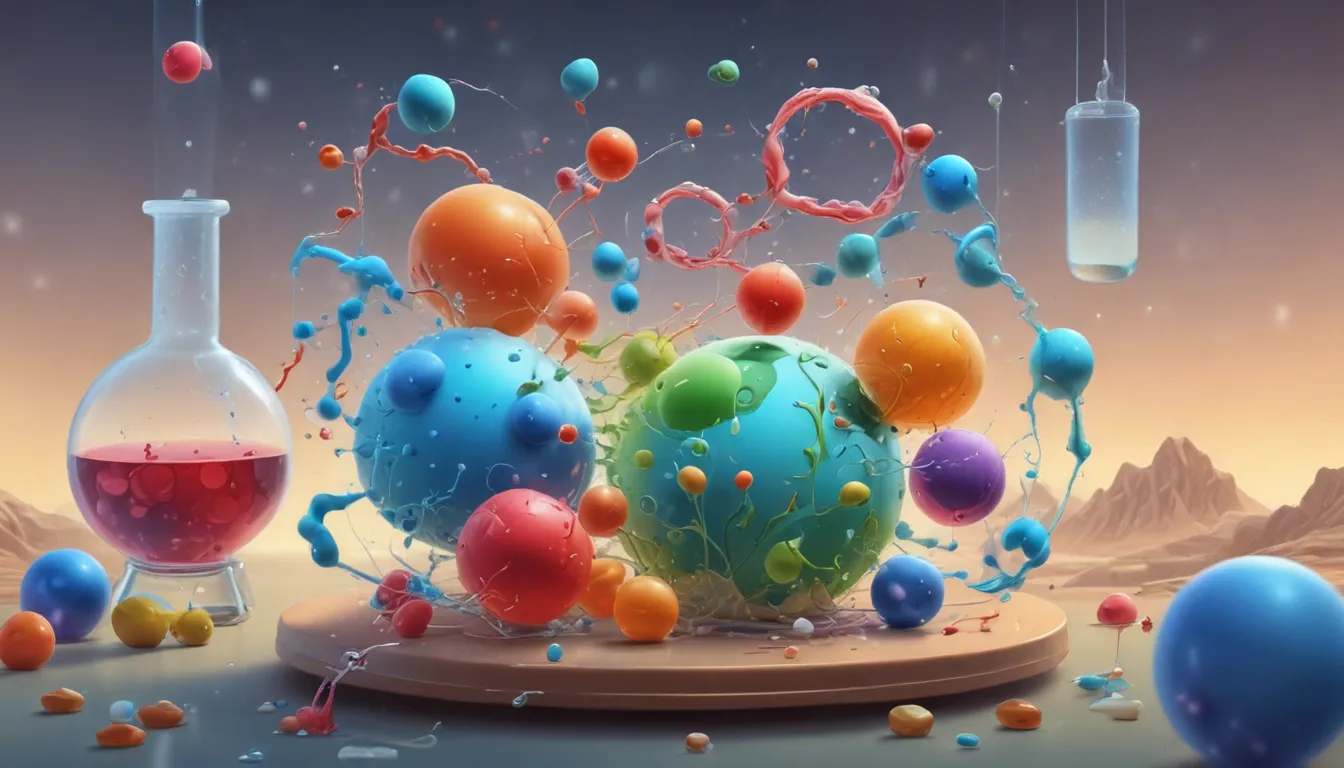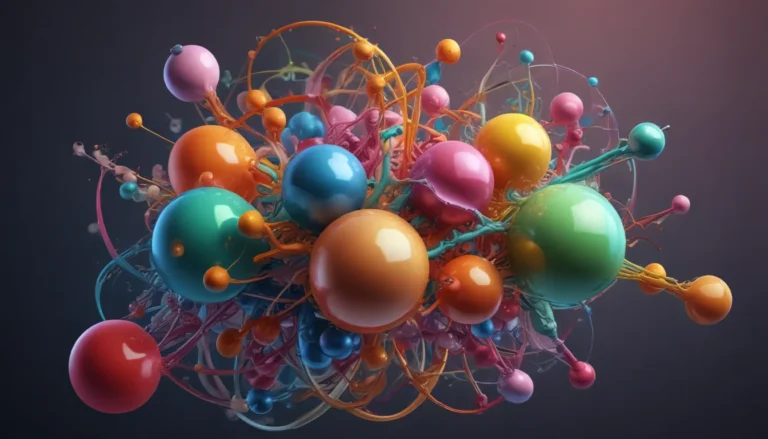A Note About Images: The images used in our articles are for illustration purposes only and may not exactly match the content. They are meant to engage readers, but the text should be relied upon for accurate information.
Enzyme catalysis is a captivating process that lies at the core of numerous biological functions. These miraculous catalysts possess the incredible ability to accelerate chemical reactions, thus sustaining life as we know it. As we embark on a journey into the captivating world of enzymes, we will unveil 18 astonishing facts that will reshape your understanding of these extraordinary catalysts. Get ready to be dazzled as we unravel the intricate mechanisms, diverse functions, and remarkable capabilities of enzymes. So, fasten your seatbelts and prepare for an exhilarating adventure into the enchanting realm of enzyme catalysis!
The Marvel of Enzymes: Unveiling the Astonishing Truths
Enzymes are indeed the superheroes of the chemical world, akin to the Flash of biology, speeding up reactions by mind-blowing factors without being depleted. Moreover, like a discerning chef in a bustling kitchen, enzymes are picky eaters, meticulously selecting only specific molecules to work on, ensuring precision and excellence in the cellular domain.
Unraveling the Enigmatic Efficiency of Enzymes
Enzymes showcase an unparalleled efficiency as catalysts, boosting reaction rates by staggering factors of millions or even billions. Their ability to enhance chemical reactions without being consumed in the process makes them indispensable components in biological systems, powering the intricate machinery of life.
The Intriguing Architecture of Enzymes
Central to their catalytic prowess is the specific three-dimensional structure that enzymes adopt. This unique shape is tailored to perfectly fit their target molecules, allowing enzymes to bind with substrates and orchestrate the conversion of reactants into products with exquisite precision.
Lowering the Barriers: Enzymes and Activation Energy
A pivotal role of enzymes is to diminish the activation energy necessary for a chemical reaction to take place. By reducing this energy barrier, enzymes facilitate reactions at a significantly accelerated pace, serving as the catalysts that fuel life’s essential processes.
The Art of Specificity in Enzymatic Reactions
Every enzyme possesses a distinctive substrate or group of substrates on which it operates. This specificity ensures that enzymes execute desired reactions accurately, without interfering with other cellular processes, thereby upholding the orchestration of biochemical transformations.
Orchestrating the Symphony: Regulation of Enzyme Activity
Cells intricately regulate enzyme activity to adapt to changing environmental conditions. This dynamic control mechanism ensures that reactions occur when needed, maintaining a delicate balance essential for cellular equilibrium and functionality.
Temperature and pH: Guardians of Enzyme Functionality
Temperature and pH exert significant influences on enzyme activity. Enzymes exhibit optimal performance within specific temperature and pH ranges, beyond which their efficacy may be compromised. This knowledge proves invaluable for fine-tuning enzyme performance in diverse industrial applications.
Diving into Diversity: Classification of Enzymes
Enzymes are categorized into various classes based on the types of reactions they catalyze. From oxidoreductases to isomerases, each class exhibits distinct roles and mechanisms of action, showcasing the remarkable diversity of enzymatic functions.
Illuminating the Versatility of Enzymes in Industries
Enzymes have found widespread applications across industries such as food and beverage, pharmaceuticals, agriculture, and biofuel production. Their versatile nature and capacity to execute specific reactions make them indispensable assets in a myriad of industrial processes.
Enzymes: Guardians of Health in Diagnostic Frontiers
In medical diagnostics, enzymes play a pivotal role in detecting and quantifying specific disease biomarkers. These diagnostic tests enable early identification and monitoring of various health conditions, paving the way for timely interventions and enhanced patient outcomes.
Crafting New Horizons: Genetic Engineering of Enzymes
Scientists can manipulate enzymes’ genetic material to alter their properties or develop novel enzymes. This genetic engineering avenue offers endless possibilities for tailoring enzymes to suit specific applications, enhancing their efficiency, stability, or substrate specificity.
Thriving Amidst Extremes: Enzymes in Harsh Environments
Some enzymes have evolved to function in extreme conditions, including high temperatures, extreme pH levels, or elevated salt concentrations. Termed extremozymes, these enzymes hold promise for applications in industrial processes that demand rugged operational conditions.
Embracing Synergy: Enzymatic Cascades in Nature
Enzymes often collaborate in sequential cascades, where the product of one reaction serves as the substrate for the next enzyme in the pathway. This synergistic orchestration enables highly efficient and synchronized metabolic processes within cells, underscoring the elegance of enzymatic teamwork.
Unveiling Dynamism: The Dynamic Behavior of Enzymes
Enzymes exhibit dynamic behaviors, undergoing conformational changes during catalysis. These structural dynamics are pivotal for enzyme-substrate recognition and the efficient conversion of reactants into products, highlighting the intricate dance of molecular interactions.
Navigating Roadblocks: The Art of Enzyme Inhibition
Specific molecules known as enzyme inhibitors can obstruct the active site of an enzyme, impeding its catalytic activity. Harnessing enzyme inhibition offers therapeutic avenues to modulate biological processes or combat diseases effectively.
Fostering Life’s Blueprint: Enzymes in DNA Replication
Critical enzymes like DNA polymerases and DNA helicases are indispensable for DNA replication, ensuring accurate duplication of genetic material during cellular division, thereby safeguarding the fidelity of genetic information.
Digestive Maestros: Enzymes in Food Digestion
Digestive enzymes, including amylases, proteases, and lipases, play a vital role in breaking down complex carbohydrates, proteins, and fats in the digestive tract. This enzymatic breakdown facilitates nutrient absorption and energy production, nurturing our body’s nutritional needs.
Sowing the Seeds of Life: Enzymes in Photosynthesis
During photosynthesis, enzymes catalyze the conversion of carbon dioxide and water into glucose and oxygen. These enzymatic reactions are instrumental in energy production and the synthesis of organic compounds in plants, nurturing the cycle of life on Earth.
Nurturing Health: Enzymes in Drug Metabolism
Enzymes in organs like the liver orchestrate drug metabolism, transforming drugs into more easily excretable forms and regulating their availability and efficacy within the body. This enzymatic involvement is vital in ensuring optimal drug responses and patient well-being.
Conclusion: Enzyme Catalysis Unveiled
In conclusion, enzyme catalysis stands as a remarkable biological phenomenon that underpins countless fundamental processes. The 18 astonishing facts showcased in this exploration illuminate the incredible diversity, specificity, and significance of enzymes in shaping the intricate tapestry of life’s chemistry.
As we continue to unravel the mysteries of enzyme catalysis, we foresee a future brimming with awe-inspiring discoveries. The study of enzymes is an ever-evolving journey that promises to unveil new insights into the mechanisms governing life itself, fostering innovation and advancement across diverse scientific landscapes.
FAQs: Delving Deeper into Enzyme Catalysis
-
What is enzyme catalysis?
Enzyme catalysis refers to the process wherein enzymes accelerate chemical reactions, serving as highly efficient biological catalysts. -
How do enzymes facilitate reaction acceleration?
Enzymes expedite reactions by lowering the activation energy required for the reaction to proceed, thereby enhancing reaction rates. -
Are enzymes specific to particular reactions?
Yes, enzymes exhibit high specificity to unique substrates, owing to their precise three-dimensional structures that enable selective binding and catalysis. -
Can enzymes be reused in reactions?
Absolutely, enzymes can be utilized repeatedly in reactions as they remain unaffected and unspent by the catalytic process. -
How are enzymes regulated within the body?
Enzyme activity within the body is regulated through mechanisms like feedback inhibition, covalent modifications, and modulation of enzyme expression levels. -
Do enzymes function under extreme conditions?
Certain enzymes termed extremozymes are capable of operating in extreme environments characterized by high temperatures, pH extremes, or elevated salinity levels. -
Can enzymes be engineered for specific functions?
Certainly, enzymes can be engineered through methods like protein engineering and directed evolution to enhance catalytic activity, modify specificity, or tailor enzymes for industrial or medical applications. -
Are all enzymes composed of proteins?
While the majority of enzymes are proteins, there exist RNA molecules known as ribozymes that also possess catalytic capabilities. -
Is enzyme catalysis susceptible to inhibition?
Enzyme catalysis can indeed be inhibited by factors like enzymatic inhibitors and competitive substrates that disrupt enzyme-substrate interactions, thereby modulating enzymatic activity. -
What are the diverse applications of enzyme catalysis?
Enzyme catalysis finds application across multiple domains, including industrial processes, pharmaceutical advancements, food production enhancements, and environmental remediation solutions.
Embrace the Journey with Us
Our dedication to delivering authentic and captivating content lies at the heart of our endeavor. Each fact shared on our platform is a contribution from individuals like you, offering a rich tapestry of insights and knowledge. Count on us to uphold the highest standards of accuracy and engagement as we explore, learn, and grow together. Trust in our unwavering commitment to quality and authenticity as we navigate the wondrous universe of enzyme catalysis. Join us on this enchanting voyage of discovery and enlightenment, as we unlock the mysteries and marvels of life’s captivating chemistry.





